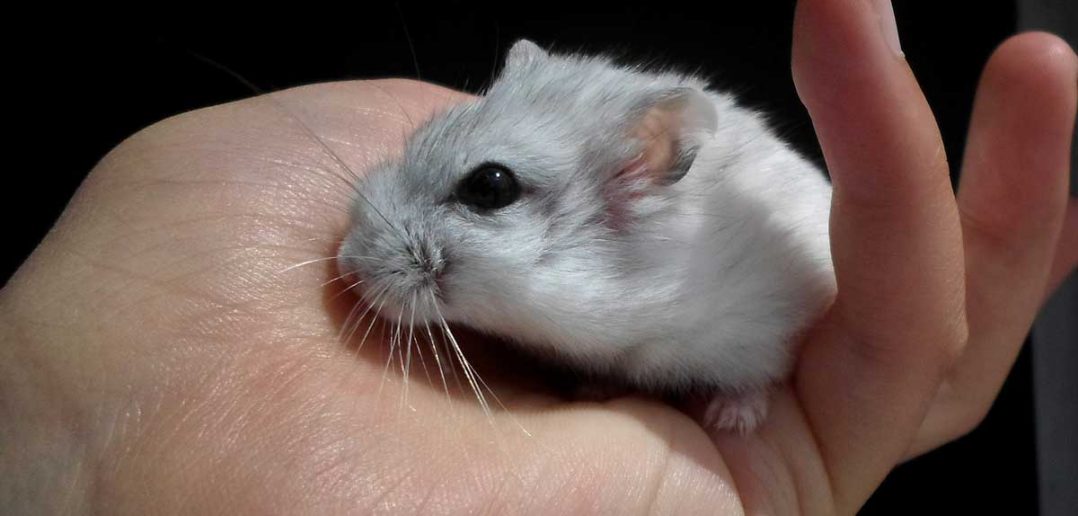As pets go, hamsters are fairly easy to take care of. Hamsters require no walking, and are not particularly dirty or stinky, they are small and don’t take up much space and are generally inexpensive. Hamsters are also fairly hearty animals and can be a very good pet for a child or a family with several children. There are however, two distinct choices when it comes to adopting a hamster for your family, and that is the dwarf hamster and the syrian hamster. I spoke with Ken Brocx, the founder of Hamsterific.com, and authoritative hamster and small pet website about this question and what his recommendations would be to someone considering adopting a hamster but not knowing exactly which route is best for his/her family.
Andy Markison:
Thanks, Ken for taking the time to speak to us. First of all, let’s assume a family with a young child or children (around seven or eight years of age) is considering adopting a hamster or hamsters for their home. Would you personally recommend either a dwarf hamster or a syrian hamster in this case?
Ken Brocx:
Typically I would recommend a syrian hamster for younger children. Dwarf hamsters are smaller which can make them harder to handle. Also, if a dwarf manages to get loose they are faster than syrians and thus harder to catch. Syrians tend to be more docile if they are properly raised.
AM: Syrian hamsters are supposed to be solitary once they are weaned, but that’s not the case with dwarf hamsters is it?
KB: No. Mostdwarf hamsters prefer some company, but that means more space. That can be a problem since many commercial cages are too small for more than one hamster, even a dwarf hamster.
AM: Is there any reason to purchase a dwarf hamster solitarily? Or would it be better to adopt two dwarfs rather than one?
KB: In the wild dwarf hamsters live in colonies, so I prefer to keep them that way. A dwarf hamster on its own will need a lot of attnetion to keep it from getting depressed.
AM: If you initially purchase a dwarf hamster and later wish to introduce a second (or third) dwarf hamster would that be possible or are you asking for conflicts with such an introduction?
KB: It depends on the particular dwarf hamster and on how long they have been alone. If a dwarf hamster has been on its own for more than a month, I find it is very difficult to inroduce a new cagemate. Young dwarf hamsters will accept a new hamster much more readily than an older dwarf hamster. Also, dwarf hamsters tend to socialize better with siblings than with strange or unfamiliar hamsters.
AM: Are dwarf hamsters generally less hearty creatures than syrians?
KB: Both dwarf and syrian hamsters are very hearty creatures. Dwarf hamsters have been domesticated for a much shorter time than syrians, and because of that there has been less of an opportunity for them to become inbred. Inbreeding can cause many problems with the health of any breed of hamster. In syrians this often results in a hamster that is difficult to tame. In dwarf hamsters it is very common to see diabetes in inbred pups.
AM: What kind of equipment would you recommend someone about to adopt a hamster get for their hamster’s new home?
KB: Hamsters need a constant supply of clean water, a food bowl that’s heavey enough that it won’t tip over when a hamster is crawling on it, a wheel for exercise and a “nest” where they can feel secure. Wheels aren’t just toys. A hamster in the wild can run several miles a night marketing its territory and looking for food and the only way we can duplicate that in a confined space is a wheel. In the wild hamsters live in burrows underground For nesting a hamster needs a place where it feels it can retreat from danger. A hamster without a nest will feel insecure and nervous.
AM: What are the life spans of dwarfs and syrian hamsters?
KB: Dwarfs usually live 2-4 years depending on bred, living conditions and genetic disposition. Syrians live about 2-3 years.
AM: What would you suggest someone look for when purchasing or adopting a hamster.
KB: The most important things are the hamsters health and personality. The color, long hair and pretty eyes won’t matter much if you have a sick hamster. Look for clean and dry fur, especially around the butt of the hamster, stressed hamsters can get Wet Tail, which is a deadly type of diarrhea. Wet Tail can spread to surrounding cages and it can be very difficult to sterilize an area after an outbreak. Personality is very important, too. If you pick an outgoing hamster that doesn’t mind being held you’re probably going to have a much easier time taming and making friends with him or her.
AM: Is there a reason to adopt a hamster(s) from a breeder rather than a pet store?
KB: Professional breeders usually take great care in ensuring their hamsters are not inbred. Inbreeding can result in many health and personality problems. Many pet stores buy form these same breeders, although some may just let their hamsters breed in the store leading to rampant inbreeding and hamsters with poor health. Also, just because a person has lots of hamsters and sells them does not mean they are a quality professional breeder. Don’t forget to check your local shelters, too. Animal shelters often have hamsters that need good homes.
AM: Is the diet of the syrian significantly different than that of a dwarf? I know, for example, that giving dwarf hamsters fruit that may be high in sugar could be problematic because dwarfs may be more likely to become diabetic.
KB: Other than that, syrians and dwarfs have similar diets.
AM: What is “heat” exactly? It’s related to nuts in some way isn’t it or is it related to other types of foods as well? And does “heat” affect a sryian and a dwarf in the same way?
KB: Well, there are two types of “heat.” Heat can be the term for a when a female hamster comes into season, but you are talking about the condition that affects hamsters that eat too many fatty foods. That type of “heat” is usually caused by an owner who wants to feed their hamster a treat, usually sunflower seeds, and goes overboard. Too much oil, like that in sunflower seeds, can cause a hamster’s metabolism to speed up and cause them to lose hair. That’s “heat” and I’ve only seen it in dwarf hamsters.
AM: Any last words, warnings, recommendations or other thoughts in general that you’d like to share with someone who is interested in adopting a hamster?
KB: Health and personality are the most important things in buying a new hamster, buy the biggest home for your hamster you can, never put two syrian hamsters together, and play with your hamster as oten as you can!
Andy Markinson is an illustrator, graphic designer, animal lover and pet owner living in Germany. Ken Brocx is the founder of Hamsterific.com, an authoritative website on hamsters and other small pets.




